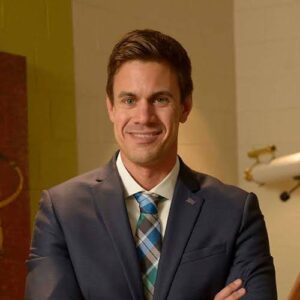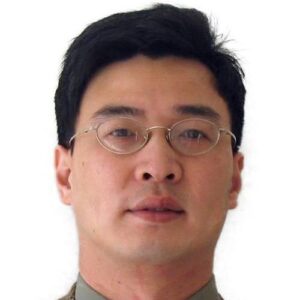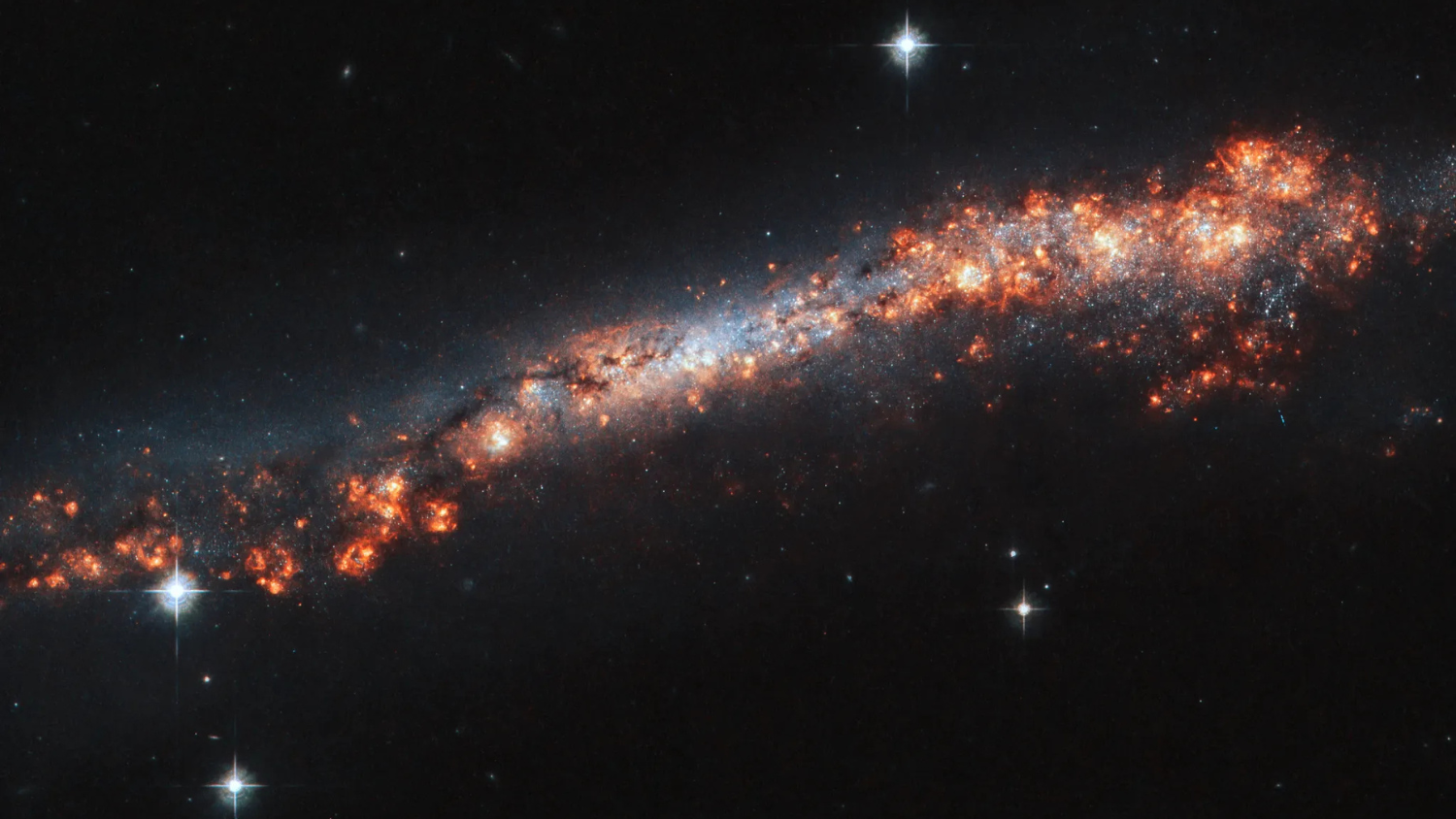NC Space Grant Announces 2024-2025 Faculty Research Grant Recipients

North Carolina Space Grant is pleased to announce the recipients of the 2024-2025 Faculty Research Grants. The selected faculty members will make research contributions to the STEM field through examination of topics in astrophysics, engineering, and more.
“As faculty awardees pursue new research directions or explore new partnerships, they will engage students in research endeavors that range from data manipulation, analysis and visualization of spider binaries to designing, fabricating and testing metamaterials for space applications,” said Sandy Canfield, assistant director of NC Space Grant.
NC Space Grant created the Faculty Research Grant to encourage faculty pursuing research aligning with NASA’s Mission Directorates. While intended to support both emerging and new faculty members, the one-year grant also calls for faculty to meaningfully involve students in their research.
Selected faculty are either pursuing new research directions, developing new projects, or cultivating new collaborations such as with NASA centers, state and federal research facilities, aerospace and aviation industries, education partners, state and local government agencies, and more to align their research with NASA’s priorities.
Congratulations to NC Space Grant’s 2024-2025 Faculty Research Grant recipients:
Brad Barlow, Nominated Associate Professor, Department of Physics & Astronomy, University of North Carolina at Chapel Hill

Illuminating the Cosmic Webs: Unearthing Spider Binaries through Optical Photometry
Spider binaries are a class of compact binaries that typically consist of a pulsar (a highly magnetized, rotating neutron star) and a low-mass companion. The intense, high-energy radiation and wind from the neutron star slowly heats up and ablates material from the companion. In time, the orbital period will shorten, and the companion will be consumed. Studies of spider binaries can provide valuable insights into various astrophysical processes, including mass transfer and evolution, the properties and behavior of neutron stars, and high–energy electromagnetic emissions. Such systems are rare, and most have been discovered through X-ray/gamma-ray detections or radio observations of their millisecond pulsars. Due to a series of serendipitous events, our research group has discovered one of the closest (and thus brightest) spider binaries currently known using optical photometry instead of radio or high-energy observations. This discovery was made while investigating high signal-to-noise light curves of hot subdwarf binaries — an unrelated type of binary. As the highly irradiated hot spot on the companion rotates in and out of view, the optical flux can vary by up to a factor of ~10 with a light curve shape that mimics those of hot subdwarf reflection effect binaries. Here we propose a series of optical search strategies to uncover and study new spider binaries using data from NASA’s TESS spacecraft, the 4.1-m SOAR telescope, and Skynet.
Barlow’s hope is that student participation in this project will foster enthusiasm, collaboration, and a deeper understanding of the subject matter in student researchers. Students will learn how to search and review the astronomical literature on spider binaries and related objects; write basic Python scripts for data analysis and visualization; use TOPCAT to inspect and manipulate tabular data; download TESS photometry from the Barbara A. Mikulski Archive for Space Telescopes; compute Lomb Scargle periodograms to search for periodic signals in time-series data; obtain, reduce, and analyze time-series photometry from the Skynet telescope network; obtain, reduce, and analyze time-series spectroscopy from SOAR/Goodman; write clear and concise reports summarizing research results and progress; and give engaging and effective scientific presentations to the public and scientific audiences.
Laura Casto-Boggess, Assistant Professor, Chemistry, University of North Carolina at Charlotte

Nanoscale sample processing and analysis using segmented flow patterns and capillary electrophoresis for high sensitivity detection of potential biosignatures in low volume samples
A persistent analytical challenge for trace quantitative analysis is the ability to maintain highly sensitive and selective detection while utilizing low sample volumes. In the context of space exploration, like fly-by missions to icy moons in search of extraterrestrial life, sample collection is mass limited. Even if samples are diluted to only microliter volumes, biosignature analytes are likely present in low nanomolar concentrations. Capillary electrophoresis (CE), a widely employed analytical separation method for bioanalysis, offers many advantages, including rapid, sensitive, and selective sample analysis using low sample volumes (pL-nL scale). However, larger sample volumes are still often required for successful sample injection into the separation channel. While existing CE technologies coupled with laser-induced fluorescence (LIF) detection platforms are readily capable of high sensitivity for targeted trace analysis of potential biosignatures, our work aims to generate new directions for coupling microfluidics with nanoscale separations to reduce the overall volume requirements by integrating segmented flow regimes. Detection merits will be maintained and enhanced through innovative frequency-encoding strategies prior to electrophoresis. Combining the advantages of CE-LIF and segmented flow on microfluidic platforms will allow us to realize new powerful frequency-encoded detection strategies to enrich analytical return on microliter samples using nanoliter fluidic manipulation.
Students associated with this project will become well-versed in the analytical rigor required for designing new technology directions in measurement science for spaceflight. Students will have the opportunity to experience research in national laboratory environments. PhD and master’s students will be involved in the scientific publication process. Undergraduate students will contribute to peer-reviewed articles, conduct a literature review, and practice and refine their skills in scientific presentations.
Rodward Hewlin Jr., Assistant Professor, Mechanical Engineering Technology; Research Scientist, Center for Biomedical Engineering and Science, University of North Carolina at Charlotte

Development of a Novel Acoustic and Magnetic DIW 3-D Printer for Printing Complex Geometric Discontinuous High Heat and High Strength Thermoset Composites
Fiber reinforced thermoset composites (FRTC) have expansive applications in automotive, aerospace, marine, and industrial industries due to their excellent mechanical and thermal properties and lightweight. These composites also have high specific strength to weight ratio, high specific stiffness, good fatigue performance, good corrosion resistance and high thermal expansion coefficients. In aerospace applications, space shuttles such as the orbiter space shuttle are exposed to exceedingly high temperatures and require the use of a thermal protection system to protect spacecraft components from aerodynamic heating. The aerodynamic heating is generated at the surface of a space vehicle due to the combination of compression and surface friction of atmospheric gas. Presently, the main drawback with FRTCs and phenolic composites includes expensive and labor-intensive manufacturing processes.
Additive manufacturing (AM), also known as 3D printing, has recently revolutionized the manufacture of 3D objects, and is promising for cost-effective, rapid, and reliable manufacturing of composite materials and structures. Commercial 3D printers capable of printing thermoplastic composites have recently been reported to have good repeatability. However, limitations of these 3D printed thermoplastic composites include low fiber volume fraction, low susceptibility to high temperatures, and limitation of printing complex geometries. This basic research program aims to create a novel 3D printing technique incorporating an acoustic and magnetic field-assisted direct ink write (DIW) process. One of the key advantages of acoustic manipulation of fibers is that it is material agnostic i.e., independent of material properties or shape other than density or difference in compressibility between the fiber and polymer matrix.
Hewlin will recruit community college students to take part in summer research to introduce them to the diversity and interdisciplinary culture of engineering and scholarly research, with a focus on retention of freshman-level engineers at UNC Charlotte.
Eve Klopf, Associate Professor, Electrical and Computer Engineering, High Point University

Exploring Renewable Energy Resources Specific to the Electrical Environment on the Lunar Surface
One of the challenges with long-term operation of sensors on the moon is the presence of persistent charged lunar dust. It is known that lunar dust goes through an electric charging cycle that is influenced by factors such as the lunar terminator, solar cycles, and the earth’s magnetotail. The dust is also fairly mobile due to processes such as meteorite strikes and motion due to electric force. The tendency of this mobile charged dust to cling to artificial structures on the lunar surface is a known issue for lunar exploratory missions.
Renewable energy studies on the lunar surface have primarily focused on the use of solar panels as a power source; however, a limited amount of research has been done on using the charged lunar dust as a source of electrostatic power. With the recent progress in energy harvesting technology like nanogenerators, combined with the renewal of research interest in robotic and human exploration of the lunar surface, this is an excellent time to explore the charged environment on the lunar surface as a source of renewable energy. The focus of this project is on exploring the feasibility of using the motion of the charged dust as well as the potential difference found between lunar regolith located in lit and unlit regions on the lunar surface, such as across the lunar terminator or between the sunlit surface and shadowed lunar craters, as a source of electric power for small sensors or slowly charging batteries.
Klopf will recruit students to engage in summer research. Students will review existing energy harvesting systems that might be particularly applicable to the electrical environment on the lunar surface; work on a plan to analyze the feasibility of the selected system for harvesting energy on the lunar surface; and present results at a conference or other setting.
Fen Wu, Professor, North Carolina State University

Advanced Flight Control Techniques based on Integrated Quadratic Constraints
The main objective of this proposal is to develop a unified control design framework and advanced control techniques for hard actuator nonlinearities. Such nonlinearities, including time delay and saturation, exist widely in aircraft control systems and could have detrimental effects on high performance control systems. Although they have been studied for many years, effective and systematic control designs to address these actuator nonlinearities are still lacking. With the help of this powerful Integral Quadratic Constraints (IQC) tool, it is promising to solve challenging saturation control problems with optimized performance and computational efficacy.
Inspired by PI’s recent success in IQC-based delay control research, this project presents transformative control design approaches to overcome the limitations of current control theory in handling actuator saturation nonlinearities. This work could transform nonlinear actuation control paradigm by shifting the future research direction to innovative IQC-based approach and better IQC characterization of actuator nonlinearities. Moreover, the proposed actuation control approaches would provide critically needed technology for high performance flight control problems, and could realize the full potential of these cutting edge applications. Because of universal features of the proposed research, it is expected to have wide-spread applications and significant impact on robotic automation, unmanned vehicle teams, aircraft engine control, and outer space teleoperations.
Wu wil recruit a graduate student to develop IQC constraints for saturation nonlinearity, designing of IQC-based control law for aircraft dynamics.
Fuh-Gwo Yuan, Samuel P. Langley Distinguished Professor, North Carolina State University

Generative Design of Anepectic Materials using Deep Convolutional Artificial Intelligence
Like the related auxetic materials, anepectic materials are those which exhibit negative Poisson’s ratios (NPR) but, unlike auxetics, also exhibit negative or zero thermal expansion (NTE/ZTE) characterized by a nonpositive coefficient of thermal expansion. While their high specific energy absorption, crack resistance, and resistance to thermal straining make anepectics desirable, their design is quite challenging, often involving tuning the topologies of complex micro-architected materials to achieve desired properties. A design framework leveraging generative artificial intelligence (AI) for the exploration of anepectic material topologies with desired Poisson’s ratio (PR) and coefficient of thermal expansion (CTE) selected by the user is proposed. Inspired by text-to-image generation like OpenAI’s DALL-E, this framework combines the feature extraction abilities of convolutional neural networks (CNNs) with the generative power of variational autoencoders (VAEs) or generative adversarial networks (GANs) to create many topologies from a single combination of PR and CTE. At the beginning of the task, we will examine the concepts of designing the auxetics using these proposed approaches.
Once generated, the designs are validated first through simulation, then through physical testing. Finite element simulation allows for rapid evaluation of the many designs, narrowing down the pool to the best performing and most feasible. Since traditional manufacturing processes are ill-suited for this application due to the complex nature of the micro-architected materials, polymer-based multi-material additive manufacturing is instead used for physical fabrication and testing of candidate topologies. Combining the recent advancements in AI and multi-material additive manufacturing, this design framework allows for straightforward design of anepectic materials with tunable PR and CTE.
For this project, PhD student Jack Van Welzen will assist to develop the AI framework for generating the anepectic materials then prove the feasibility of the new class of materials working through the Center for Additive Manufacturing and Logistics (CAMAL) laboratory at NC State University as well as NASA partners.
- Categories:


